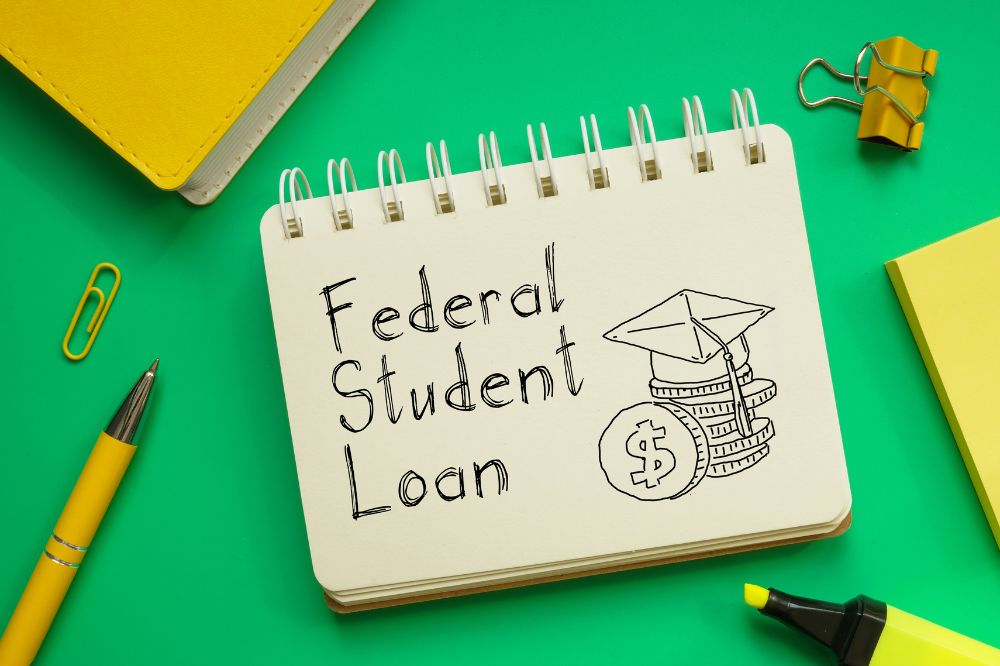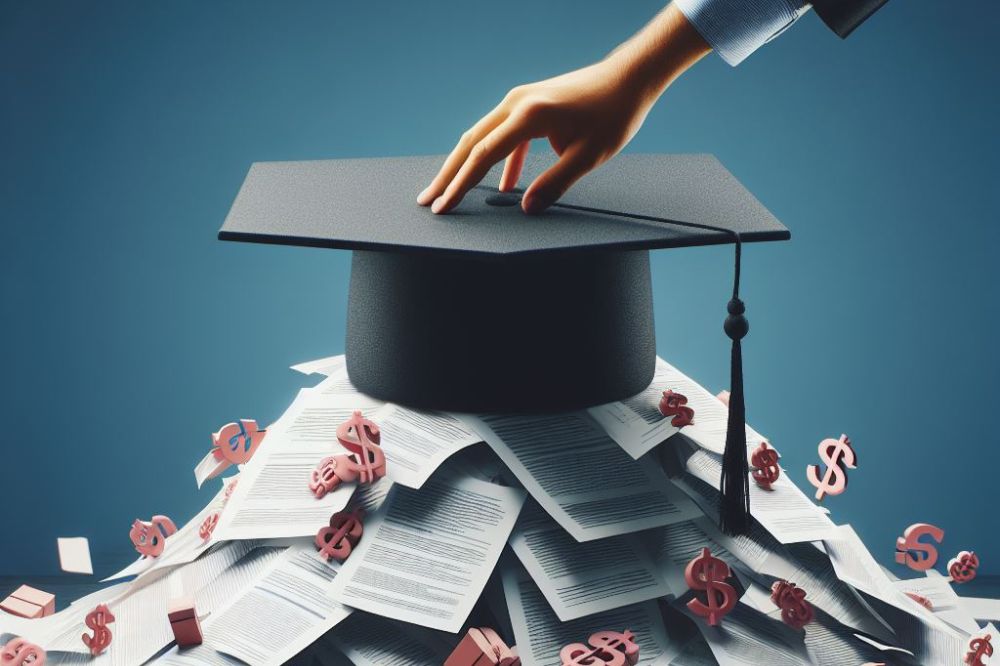Dealing with the financial strain of bankruptcies as a recent college graduate and debtor can be overwhelming, especially with loan balance and education expenses. Balancing the excitement of completing your education as college students with the stress of financial difficulties, expenses, loan balance, and bankruptcies is a stark contrast many face. The process of filing for bankruptcy, especially when navigating it right out of college, comes with its challenges and implications for students.
Understanding the complexities involved, from managing student loans to protecting future assets, is crucial. Join us to gain insights on how to navigate this challenging situation and set yourself on a path towards financial recovery.
Key Takeaways
- Educate Yourself: Understand the basics of bankruptcy to make informed decisions about your financial situation.
- Consider Chapter 7 vs. Chapter 13: Explore the differences between Chapter 7 and Chapter 13 bankruptcy to choose the option that best suits your needs.
- Evaluate Undue Hardship: Learn about the concept of undue hardship in relation to student loans and bankruptcy to assess if you qualify for loan discharge.
- Explore Alternatives: Consider alternatives to bankruptcy, such as income-driven repayment plans or loan consolidation, before making a final decision.
- Bust Myths: Debunk common misconceptions about student loans and bankruptcy to have a clearer understanding of your options.
- Seek Professional Advice: Consult with a financial advisor or bankruptcy attorney for personalized guidance tailored to your specific circumstances.
Understanding Bankruptcy Basics
Chapter 7 Explained
Chapter 7 bankruptcy involves a liquidation process where a trustee sells the debtor’s non-exempt assets to repay creditors. The automatic stay feature halts creditor collection actions upon filing. Understanding non-exempt property is crucial as it can be sold to settle debts.
Chapter 13 Overview
In Chapter 13 bankruptcy, debtors propose a repayment plan structure to repay creditors over three to five years. This chapter offers the potential for debt discharge, allowing individuals to eliminate certain debts. The trustee’s role is vital in overseeing the repayment plan and ensuring compliance.
Student Loan Bankruptcy
Discharging student loans in bankruptcy poses challenges for the debtor due to strict regulations under section. The undue hardship standard must be met to eliminate these debts, requiring proof of extreme financial difficulty. Bankruptcy can impact one’s credit score, affecting future financial opportunities for the debtor.
Adversary Proceeding Necessity
An adversary proceeding is necessary when disputes arise within a bankruptcy case, such as challenging the dischargeability of a debt. The bankruptcy court intervenes in these proceedings to resolve conflicts and protect the rights of all parties involved. Seeking legal representation is crucial for navigating complex legal processes effectively.
The Process of Filing for Bankruptcy
Necessary Documentation
When filing for bankruptcy, gather essential documents like pay stubs, tax returns, and financial statements. Providing accurate financial records is crucial to the bankruptcy proceedings. Disclosing all assets is vital for a successful bankruptcy case.
- List of essential documents:
- Pay stubs
- Tax returns
- Financial statements
Accurate financial records demonstrate transparency and help the bankruptcy judge assess your situation accurately. Disclosing all assets ensures that nothing is overlooked during the bankruptcy proceedings.
Choosing the Right Chapter
When considering bankruptcy, understand the differences between Chapter 7 and Chapter 13. Eligibility criteria vary for each chapter based on income levels and debt amounts. Factors to consider when choosing include income stability and asset protection.
- Comparison between Chapter 7 and Chapter 13:
- Chapter 7: Liquidation of assets
- Chapter 13: Repayment plan over time
Eligibility criteria for Chapter 7 typically involve a means test to determine if filers qualify for complete discharge of debts. Chapter 13 requires a stable income to create a repayment plan over several years.
Legal Assistance
Consulting a bankruptcy attorney is crucial for navigating complex legal processes effectively. Legal assistance can streamline paperwork filing and ensure compliance with court requirements. Professional guidance helps in understanding rights, obligations, and potential outcomes.
- Benefits of legal assistance:
- Expertise in navigating legal complexities
- Ensuring proper documentation submission
A bankruptcy attorney provides valuable insights into available options and potential pitfalls throughout the process. Their expertise can significantly impact the outcome of your bankruptcy case.
Student Loans and Bankruptcy
Undue Hardship Criteria
When considering bankruptcy, individuals often face the undue hardship criteria related to student loans. This criterion is crucial in determining whether a borrower can discharge their student loan debt through bankruptcy. The totality of circumstances test plays a significant role in this evaluation process.
The totality of circumstances test involves assessing various factors to determine if repaying student loans would cause an undue hardship. This test considers the borrower’s income, expenses, family size, and standard of living. It also evaluates future financial prospects and any additional relevant factors impacting the borrower’s ability to repay.
Totality of Circumstances Test
- The totality of circumstances test is a comprehensive evaluation method.
- It impacts bankruptcy decisions by analyzing all aspects of a borrower’s financial situation.
- Factors considered include income levels, living expenses, dependents, and future earning potential.
Federal Loans Consideration
In bankruptcy cases, federal loans receive different treatment compared to private student loans. Federal loans are generally more challenging to discharge through bankruptcy due to stricter regulations and eligibility requirements. Unlike private loans, federal student loans offer various repayment options tailored to borrowers’ financial situations.
When evaluating federal loan repayment, borrowers should explore income-driven repayment plans that adjust monthly payments based on income levels. Loan forgiveness programs may also be available for individuals working in public service or certain professions. These options provide relief for borrowers struggling with federal loan repayments.

Discharging Student Loans
Discharging student loans in bankruptcy poses significant challenges due to stringent criteria for proving undue hardship. To qualify for discharging student loans, borrowers must demonstrate that repaying the debt would impose an undue burden that persists over an extended period. Alternative options for managing student loan debt include income-driven repayment plans, loan consolidation, and seeking forgiveness through specific programs.
Navigating the complexities of student loan debt within the context of bankruptcy requires a thorough understanding of the legal framework governing these obligations. Borrowers facing financial difficulties post-graduation should explore all available options before considering bankruptcy as a solution.
Exploring Chapter 7 Bankruptcy
Eligibility Requirements
To file for bankruptcy, individuals must meet specific eligibility criteria based on their financial situation. For Chapter 7 bankruptcy, applicants must pass the means test to determine eligibility. This test evaluates income, expenses, and debts to assess if filers qualify for Chapter 7 relief.
Chapter 13 bankruptcy, on the other hand, requires individuals to have a steady income to create a repayment plan for their debts. Specific requirements include having unsecured debts below a certain amount and secured debts within defined limits.
Factors such as recent bankruptcy filings or fraudulent behavior may affect one’s eligibility for bankruptcy relief. Having substantial assets or income could impact the type of bankruptcy one can file for.
Asset Liquidation
Asset liquidation in Chapter 7 bankruptcy involves selling non-exempt assets to repay creditors. Certain exemptions protect essential assets like a primary residence, vehicle, and personal belongings from being liquidated. These exemptions vary by state and allow filers to retain crucial possessions during the bankruptcy process.
However, assets not covered by exemptions may be sold to satisfy outstanding debts. The proceeds from asset liquidation are distributed among creditors, contributing to the debt discharge process in Chapter 7 bankruptcy.

Adversary Proceeding Timing
Proving financial distress in bankruptcy involves an adversary proceeding, where parties present evidence supporting their financial situation. Filers must submit documentation such as income statements, tax returns, and expense records to demonstrate their inability to repay debts.
Financial evidence plays a crucial role in determining the outcome of bankruptcy cases. Providing accurate and detailed information about one’s financial circumstances is essential for a successful bankruptcy petition.
Navigating Chapter 13 Bankruptcy
Repayment Plan Setup
Setting up a repayment plan in Chapter 13 bankruptcy involves meticulous planning and documentation. First, calculate your disposable income. Next, propose a repayment plan to the court outlining how you intend to pay off your debts over three to five years. Ensure accurate financial records are submitted for review by the trustee.
Adhering to the repayment plan is crucial for successfully navigating Chapter 13 bankruptcy. Strictly following the plan shows commitment and responsibility towards resolving your debts. Failure to adhere to the plan can lead to dismissal of the case, leaving you vulnerable to creditors’ actions.
Failing to follow the repayment plan in Chapter 13 bankruptcy can have severe consequences. These may include dismissal of the case, allowing creditors to resume collection actions. Any debts not included in the original plan may remain unpaid, leading to continued financial strain post-bankruptcy.
Debt Restructuring
Debt restructuring in Chapter 13 bankruptcy involves reorganizing your debts into a manageable payment structure approved by the court. This process allows you to consolidate debts into a single monthly payment based on your disposable income. By restructuring debt, you can prioritize essential expenses while gradually paying off outstanding balances.
Chapter 13 bankruptcy’s debt restructuring provides a structured approach to managing debts by creating an affordable repayment plan tailored to your financial situation. This helps prevent further accumulation of interest and penalties on existing debts, offering a clear path towards becoming debt-free.
A court-approved repayment plan under debt restructuring offers several benefits, including protection from creditors’ collection efforts during the repayment period. It also allows you to retain assets that might otherwise be at risk in other forms of bankruptcy.
Adversary Proceeding Timing
In Chapter 13 bankruptcy, an adversary proceeding is a lawsuit within the bankruptcy case used to resolve disputes or challenges regarding specific issues like fraud or objections raised by creditors. The timing of an adversary proceeding varies but typically occurs after filing for bankruptcy and before confirmation of the repayment plan.
Adversary proceedings play a crucial role in addressing contentious matters that could impact the outcome of your Chapter 13 bankruptcy case. Resolving these disputes promptly ensures a smoother process towards achieving financial stability post-bankruptcy.
The Concept of Undue Hardship
Proving Financial Distress
Financial distress that may qualify for bankruptcy relief includes unemployment, medical emergencies, and overwhelming debt from student loans. These situations can lead to the inability to pay debts.
Scenarios demonstrating undue hardship for student loans involve debilitating health issues, low income levels, and lack of job opportunities post-graduation. These factors can prevent loan repayment.
Real-life situations illustrating financial distress could be a recent graduate facing job loss due to economic downturns, a borrower experiencing serious illness leading to high medical bills, or an individual with minimal income struggling to make ends meet.

Hardship Examples
Federal relief programs like Income-Driven Repayment Plans offer struggling borrowers options to manage their student loan payments based on their income levels. These programs aim to alleviate the burden of high monthly payments.
Eligibility criteria for federal debt relief initiatives often consider factors such as income level, family size, and type of federal loan. Meeting these criteria can open doors to reduced monthly payments and potential loan forgiveness after a certain period.
Participating in federal relief programs provides benefits such as lower monthly payments, extended repayment terms, and potential forgiveness of remaining debt after meeting specific requirements.
Alternatives to Bankruptcy
Federal Relief Programs
Federal relief programs offer debt forgiveness as an alternative to bankruptcy. These programs provide options for individuals struggling with overwhelming debt. By participating in these programs, individuals can potentially have a portion or all of their debts forgiven, providing a fresh start financially.
Debt forgiveness through federal relief programs can significantly impact one’s credit score. While debt forgiveness may lead to a temporary decrease in credit score, it allows individuals to eliminate their debts and work towards rebuilding their financial stability over time.
For those hesitant about seeking debt forgiveness through bankruptcy, there are alternative strategies available for managing debt effectively. These strategies include debt consolidation, negotiating with creditors for reduced payments, and seeking financial counseling to create a feasible repayment plan.
Debt Forgiveness Options
When considering filing for bankruptcy, understanding the potential outcomes of a bankruptcy discharge is crucial. A successful discharge can result in the elimination of certain debts, giving individuals the opportunity to start anew without the burden of overwhelming financial obligations.
Certain types of debts can be discharged through bankruptcy, including credit card balances, medical bills, and personal loans. However, it’s essential to note that not all debts are eligible for discharge, such as student loans and child support payments.
The implications of a successful discharge extend beyond immediate debt relief. A discharge can provide individuals with the chance to rebuild their credit over time and regain financial stability. It offers a fresh start and the opportunity to make more informed financial decisions moving forward.
Debunking Myths About Student Loans and Bankruptcy
Discharge Possibilities
Student loans are often seen as non-dischargeable in bankruptcy, but common misconceptions about the 10-year rule exist. The 10-year forgiveness program isn’t automatic; it requires meeting specific conditions. Understanding the nuances of this program is crucial for graduates.
Eligibility for the 10-year forgiveness program involves working in a qualifying public service job. This means making 120 qualifying payments while employed full-time by a qualifying employer. Meeting these requirements can lead to loan forgiveness after ten years of payments.
The 10-Year Confusion
When considering bankruptcy post-graduation, various factors come into play. It’s essential to weigh the long-term consequences carefully. Filing for bankruptcy can impact credit scores and future financial decisions significantly.
Long-term implications include difficulty obtaining credit, higher interest rates on loans, and challenges securing housing or employment. To make an informed decision, seek advice from a financial advisor or a bankruptcy attorney. Understanding the process and its effects is crucial before proceeding.
The Bottom Line on Bankruptcy and Student Loans
Making the Decision
Bankruptcy can have lasting effects on a credit score for up to ten years, impacting future financial opportunities. It’s crucial to weigh the consequences before making a decision.
When filing for bankruptcy as a college graduate, consider how it can affect future financial decisions, such as obtaining loans or mortgages. Bankruptcy may limit your options and increase interest rates.
To rebuild credit after bankruptcy, focus on making timely payments, keeping credit balances low, and monitoring your credit report regularly. Establishing good financial habits is key to improving credit scores over time.
Long-Term Implications
After filing for bankruptcy, individuals may face challenges in securing loans or credit cards. The process involves a significant financial and emotional toll that can impact one’s confidence in managing finances effectively.
Despite the negative stigma associated with bankruptcy, it can provide a fresh start for those overwhelmed by debt. It’s essential to learn from past financial mistakes and adopt healthier money management practices moving forward.
Summary
You’ve now gained a comprehensive understanding of filing for bankruptcy as a college graduate. Remember, bankruptcy is a complex process, especially when it involves student loans. Whether you opt for Chapter 7 or Chapter 13 bankruptcy, carefully assess your options and consider alternatives before making a decision. Debunking myths surrounding student loans and bankruptcy is crucial to making informed choices. Keep in mind that the concept of undue hardship can impact your case significantly. In conclusion, educating yourself about bankruptcy and its implications on student loans is the first step towards financial recovery and stability.
Frequently Asked Questions
What are the key differences between Chapter 7 and Chapter 13 bankruptcy?
Chapter 7 involves liquidation of assets to pay off debts quickly, while Chapter 13 allows for a repayment plan over time. Choose based on your financial situation and goals.
Can student loans be discharged through bankruptcy?
Student loans are typically not dischargeable in bankruptcy unless you can prove undue hardship through a separate legal process.
What are common myths about filing for bankruptcy with student loans?
Myths include the belief that all student loans can be wiped out in bankruptcy. Get accurate information from reliable sources to make informed decisions.
Are there alternatives to filing for bankruptcy as a recent college graduate burdened by debt?
Explore options like loan consolidation, income-driven repayment plans, or negotiating with creditors before considering bankruptcy.
How does filing for bankruptcy impact future financial opportunities for college graduates?
Bankruptcy can affect credit scores and access to new credit but may provide a fresh start. Understand the long-term consequences before proceeding.




